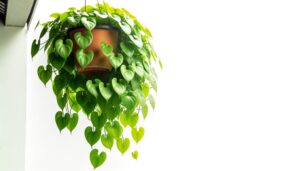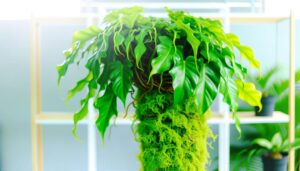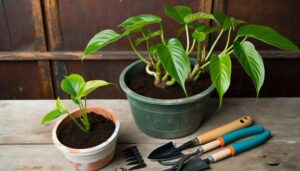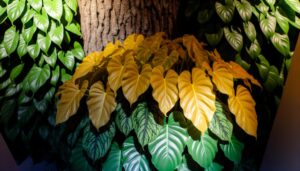What Is the Common Name for Philodendron Hederaceum?
The common name for Philodendron hederaceum is the Heartleaf Philodendron. This plant features distinctive cordate leaves with a glossy texture, belonging to the Araceae family.
Native to Central and South America, it thrives in humid, shaded environments. Known for its vining growth habit, the Heartleaf Philodendron can climb using aerial roots or trail attractively in hanging baskets.
It is well-regarded for its adaptability to low to medium light conditions and its role in air purification. For those seeking more detailed information, the Heartleaf Philodendron offers numerous fascinating aspects worth exploring further.

Key Takeaways
- The common name for Philodendron hederaceum is Heartleaf Philodendron.
- It's often referred to as Sweetheart Plant.
- Another common name is Philodendron Scandens.
- It is also known simply as Heartleaf.
- The plant is sometimes called the Trailing Philodendron.
Heartleaf Philodendron Overview
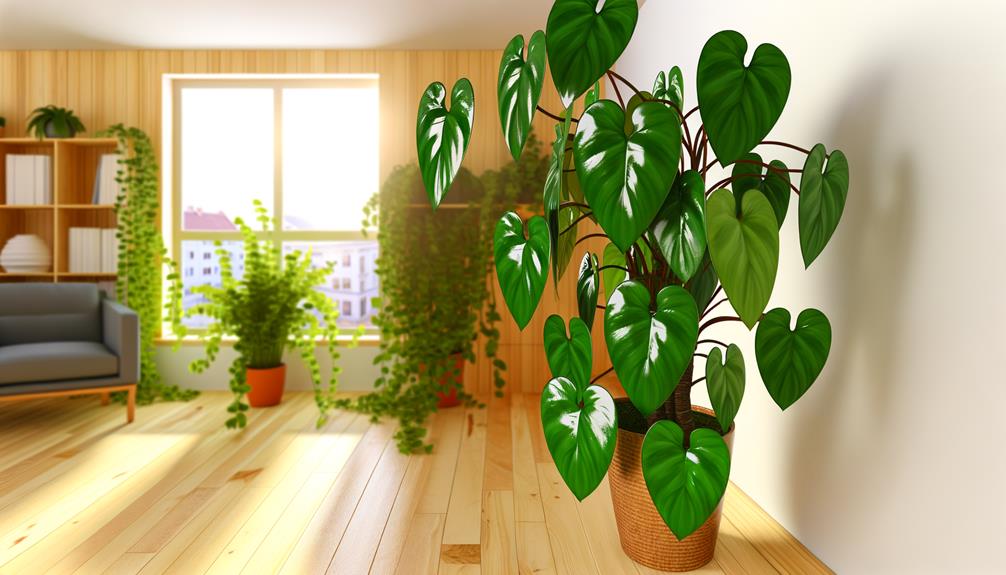
The Heartleaf Philodendron, scientifically identified as Philodendron hederaceum, is a well-liked and adaptable houseplant famous for its heart-shaped leaves and easy-care nature. This species belongs to the Araceae family and displays vining growth habits, making it suitable for hanging baskets or as a climbing plant.
Its leaves, usually dark green and shiny, can grow up to lengths of 12 centimeters. The plant thrives in low to medium light conditions and can withstand occasional neglect, making it a great option for beginner gardeners.
Philodendron hederaceum shows a high level of adaptability, able to thrive in different indoor settings. Additionally, it aids in air purification by eliminating pollutants, thereby improving indoor air quality.
Origins and History
Originating from the tropical regions of Central and South America, Philodendron hederaceum has a rich history rooted in the diverse ecosystems of rainforests and riverbanks.
This species thrives in humid, shaded environments where it can climb and spread across trees, contributing to the complex understory of tropical forests.
First described scientifically in the 18th century, Philodendron hederaceum belongs to the Araceae family, which includes other notable genera such as Monstera and Anthurium.
Indigenous cultures have utilized various parts of the plant for medicinal purposes, and its ease of propagation and adaptability have made it a staple in botanical collections and home gardens worldwide.
The plant's historical journey from native habitats to global popularity underscores its ecological and cultural significance.
Identifying Features
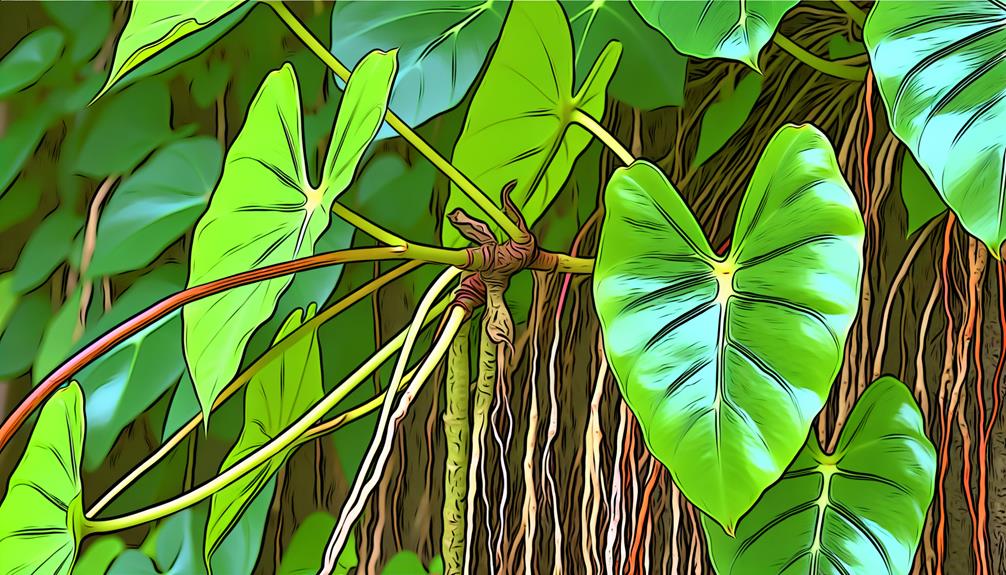
Philodendron hederaceum, commonly known as heartleaf philodendron, is distinguished by its cordate leaves that exhibit a glossy, smooth texture.
The plant demonstrates a vigorous climbing habit facilitated by its aerial roots, allowing it to ascend vertical supports or trail gracefully when grown as a hanging specimen.
These identifying features contribute to the species' adaptability and popularity in both indoor and outdoor gardening contexts.
Leaf Shape and Texture
Characterized by their heart-shaped leaves, Philodendron hederaceum exhibits a smooth, glossy texture that is both visually appealing and indicative of its robust nature.
The leaves, scientifically referred to as laminae, range from 7 to 15 centimeters in length and display a vibrant, deep green hue.
The leaf margins are entire, and the venation pattern is pinnate, with a prominent central vein that extends towards the leaf tip.
The adaxial (upper) surface is conspicuously shiny, reflecting light, while the abaxial (lower) surface maintains a slightly lighter tone.
This specific texture and shape not only enhance the aesthetic value but also serve as a key identification feature for the species, differentiating it from other Philodendron varieties.
Growth and Climbing Habit
The growth habit of Philodendron hederaceum is primarily characterized by its vining and climbing capabilities, facilitated by adventitious roots that anchor the plant to various surfaces. This hemiepiphytic species demonstrates a remarkable ability to thrive in diverse environments, often ascending tree trunks or trellises.
Key identifying features include:
- Adventitious Roots: These roots emerge from the stem, enabling the plant to cling to substrates.
- Stem Structure: The flexible, elongated stems can reach considerable lengths, supporting the plant's climbing habit.
- Node Development: Nodes along the stem produce roots and leaves, essential for vertical growth.
- Epiphytic Nature: While capable of terrestrial growth, Philodendron hederaceum often grows on other plants, showcasing its adaptability.
Understanding these features can enhance the appreciation and care of this resilient species.
Ideal Growing Conditions
Consistently thriving in indirect light, Philodendron hederaceum prefers environments that mimic its native tropical habitats. This species flourishes in bright, filtered light but can tolerate lower light conditions, making it a versatile houseplant.
Ideal temperatures range between 18°C to 27°C (65°F to 80°F), avoiding exposure to sudden temperature drops or drafts. Humidity is an essential factor; levels between 60% to 80% are best, replicating the plant's natural rainforest conditions.
Soil should be well-draining yet retain moisture, ideally a mix containing peat, perlite, and pine bark. The pH level of the soil should be slightly acidic to neutral, around 5.5 to 6.5. Ensuring these conditions will promote vigorous growth and vibrant foliage in Philodendron hederaceum.
Watering Needs
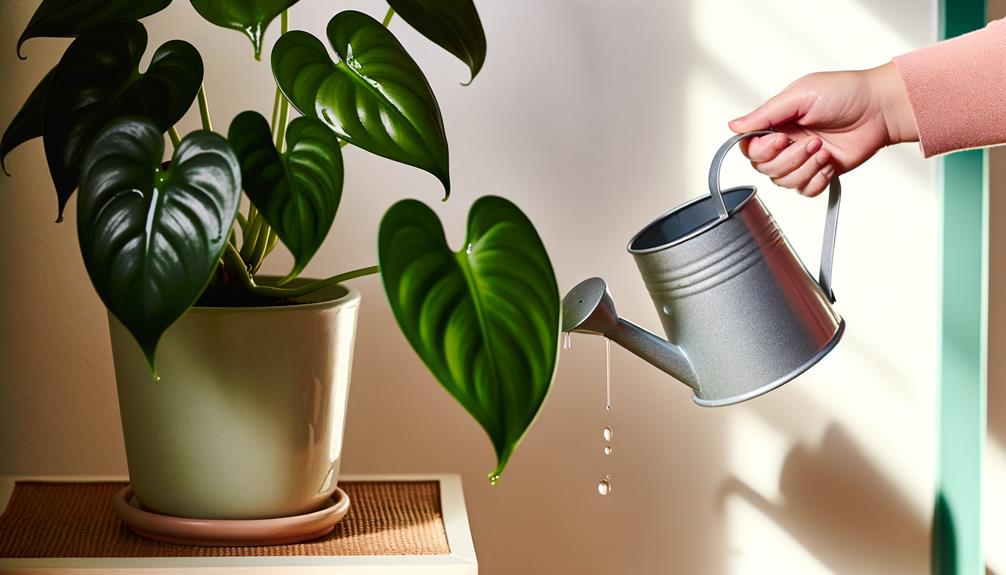
In maintaining the best conditions for Philodendron hederaceum, proper watering is essential to promote healthy growth and prevent issues such as root rot. It is crucial to strike a balance between overwatering and underwatering.
Here are key guidelines for effective watering:
- Soil Moisture: Ensure the soil remains evenly damp but not waterlogged. Allow the top inch of soil to dry out before watering again.
- Water Quality: Use distilled or rainwater to avoid mineral buildup, which can harm the plant.
- Drainage: Plant in a pot with drainage holes to prevent water accumulation at the roots.
- Seasonal Adjustments: Reduce watering frequency during the winter months when the plant's growth rate slows down.
Following these guidelines helps maintain optimal hydration for Philodendron hederaceum.
Common Pests and Issues
Despite its resilience, Philodendron hederaceum can occasionally fall victim to common pests and issues such as aphids (Aphidoidea), spider mites (Tetranychidae), and root rot caused by overwatering. Aphids, small sap-sucking insects, can weaken the plant and stunt its growth.
Spider mites, tiny arachnids, create webbing on the undersides of leaves and cause stippling damage, leading to leaf discoloration and drop. Root rot, a fungal issue exacerbated by excessive moisture, results in mushy, blackened roots and wilting foliage.
Regular inspection, proper watering techniques, and maintaining best humidity levels are optimal preventive measures. Utilizing insecticidal soap or neem oil can effectively manage infestations, while ensuring well-draining soil helps prevent root rot, thereby promoting a healthy Philodendron hederaceum.
Propagation Tips
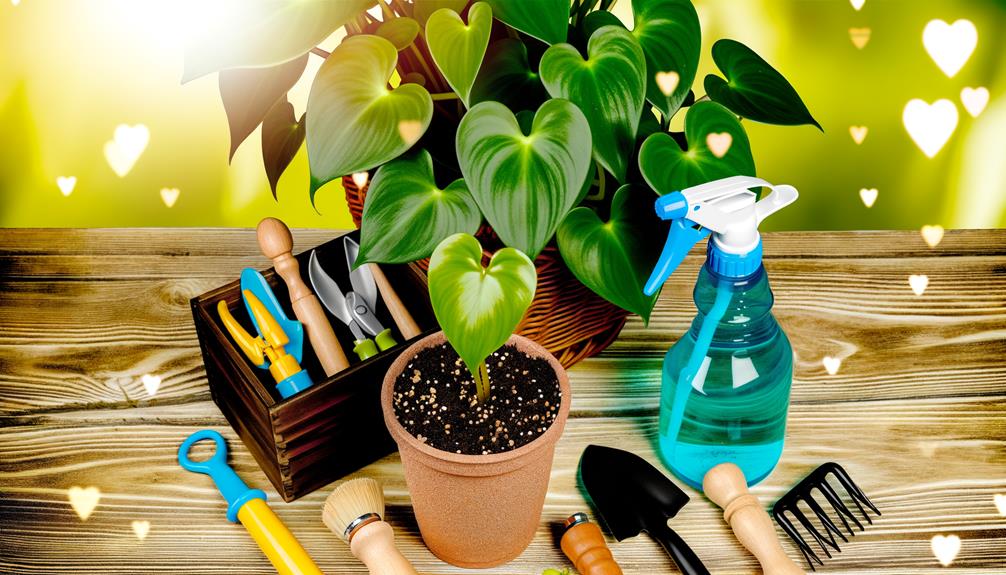
Propagation of Philodendron hederaceum can be efficiently accomplished through stem cuttings, ensuring the cutting includes at least one node and a few healthy leaves. This method allows for the reproduction of true-to-type plants.
Follow these steps for successful propagation:
- Select a Healthy Stem: Choose a stem with robust growth, free from pests and diseases.
- Make a Clean Cut: Use sterilized scissors or a knife to cut just below a node.
- Prepare for Rooting: Remove lower leaves and place the cutting in water or moist soil.
- Maintain Ideal Conditions: Provide indirect sunlight and maintain a warm, humid environment to encourage root development.
Benefits of Heartleaf Philodendron
Beyond its ease of propagation, Philodendron hederaceum, commonly known as the Heartleaf Philodendron, offers numerous benefits that make it a popular choice among indoor plant enthusiasts. This species excels in air purification, effectively removing common indoor pollutants such as formaldehyde, benzene, and trichloroethylene.
Its hardy nature allows it to thrive in low-light conditions, making it ideal for various indoor environments. Additionally, the Heartleaf Philodendron's trailing growth habit enhances aesthetic appeal, adding natural greenery to living spaces.
The plant's adaptability and low maintenance requirements further contribute to its popularity. With its ability to improve air quality and its resilient, attractive foliage, Philodendron hederaceum stands as a practical and visually pleasing addition to any indoor plant collection.
Conclusion
In sum, the Heartleaf Philodendron (Philodendron hederaceum) symbolizes resilience and adaptability, thriving in diverse environments much like a beacon of perseverance in nature's tapestry.
Its lush, heart-shaped leaves not only enhance indoor air quality but also serve as a proof of the enduring beauty of botanical life.
Cultivating this plant mirrors the nurturing of delicate relationships, requiring attentiveness to light, water, and care, highlighting the interconnectedness of life and the art of harmonious cohabitation.

